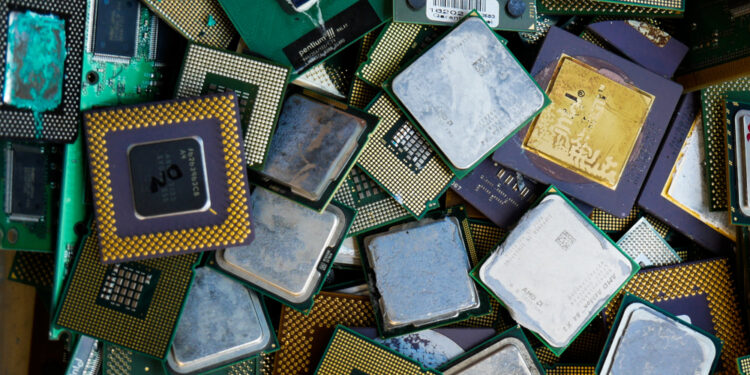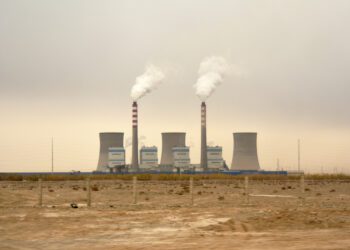Much needs to be done to make the industry more eco-friendly. Here are some action items.
In brief:
- Companies should set aggressive, measurable sustainability targets while looking to optimize sourcing for materials and minimize waste.
- Enterprises need to focus on how they can minimize the strain on water supplies and equip their plants with cleaner backup power sources.
- Over the long term, the industry must be able to rein in its transportation footprint and control the use of hazardous chemicals.
As global demand for semiconductors continues to surge and companies act to increase capacity, sustainability issues occupy a higher place on corporate, consumer, investor, and government agendas than ever before. The worldwide imperative to halt the acceleration of climate change raises numerous issues for semiconductor companies to consider as they evaluate their current and future operations. These considerations translate to action items for the near, mid and long term. Here is a sampling of the challenges that lie ahead and ways to mitigate them.
Near term: ESG
Measuring and documenting progress toward sustainability goals
Heightened environmental consciousness underscores the need for semiconductor companies to take meaningful, measurable steps toward more sustainable designs and processes. Momentum has picked up for determining how businesses can and should document their performance in those areas, but businesses would do well to stay ahead of regulatory edicts and approach reporting on environmental, social and governance (ESG) performance with the same rigor they bring to financial reporting.
The EY organization played a prominent role as part of the World Economic Forum’s International Business Council in an effort to help businesses align their strategic goals with those of the broader society. Those efforts bore fruit in 2021, when more than 60 companies and global business leaders committed to disclose a set of universal ESG metrics. More companies than ever now publish sustainability reports; semiconductor companies that set and meet aggressive sustainability targets position themselves to seize competitive advantage not only in the consumer marketplace, but also in the battle for the new generation of talent.
Optimizing sourcing for materials
Vulnerabilities exposed by the COVID-19 pandemic underscored the importance of shortening the supply chain and improving its resilience, but the environmental case for doing so – compressing an organization’s overall carbon footprint – already existed. That means creating easier access to core materials. An example would be to explore building silicon production capability and developing more foundries near fabrication plants.
Materials and suppliers also should be assessed with greater scrutiny. Conflict minerals and other materials of questionable sourcing should be eliminated from the supply chain, and suppliers should be integrated into sustainability efforts and evaluated based on their performance against environmental goals.
Minimizing waste
Leading semiconductor companies have employed a variety of tools designed to minimize waste generated from their activities. These efforts include community-level initiatives, such as spearheading environmental awareness campaigns in the communities in which they operate and maximizing recycling opportunities on their premises. But they also include the type of larger-scale efforts that will be increasingly important, such as setting aggressive waste-reduction targets through circular economy strategies, as well as reducing test wafer use and innovating to find ways to reuse consumables and spare parts.
Mid term: Water
Keeping fabrication plants from draining valuable water supplies
Location decisions for semiconductor fabrication facilities, of course, have significant ramifications for the companies and the communities they choose. As companies weigh options for building new capacity, they would do well to avoid arid or drought-prone regions where their operations could risk further straining an already precarious water supply. Regardless of location, water management is a persistent challenge. Companies building new plants will need to focus on water independence as they look to reclaim the resource, categorize its quality and raise it to ultrapure levels as needed. By classifying the purity of treated water, companies can assign priority to its uses – with the highest quality to be purified for use in manufacturing and the next-highest quality to be treated and used for non-production purposes. Companies also can be proactive in incentivizing equipment suppliers to reduce water usage in their designs.
Securing cleaner backup power generation capabilities
Critics of the aging power grid in the US argue that institutional inertia has hindered it from getting a much-needed overhaul. With challenges to the grid unlikely to go away anytime soon, rolling brownouts and blackouts that accompany high-stress periods mean companies must consider how to keep their plants running in the most environmentally responsible way. That translates to greener sources of backup power. A leading manufacturer’s recent announcement about a sizable wind energy purchase illustrates the considerable role that renewable power sources can be expected to play in the future. Incentives for using renewable sources could also be a factor going forward.
Long term: ATP
Reducing the transportation footprint
Efforts to bolster the resilience of the semiconductor supply chain have largely revolved around onshoring or nearshoring production. But for US-based companies, a vexing reality is that the overwhelming amount of the industry’s assembly, test and packaging (ATP) functions is in Asia. If more chip fabrication capacity indeed “comes home,” how can the overall carbon footprint be compressed given the distance between fabrication and ATP? Clearly, companies will need to optimize their shipping and distribution practices to make a positive impact on their transportation footprint.
One alternative would be to build greater automation into the ATP component of the business for domestic fabrication facilities. Such an approach reduces labor and dependence on scarce skills but also eliminates additional distribution pollution.
On a more local level, companies also will need to take into account how to minimize emissions from the commuter workforce. Given the absence of a viable remote work option for employees doing processing work, businesses may wish to weigh expanding their automation capabilities.
Controlling the use of hazardous chemicals
Many chemicals are involved in semiconductor production, and the ability to transition to less toxic versions will be a strong consideration for companies in the years to come. Molecular fluorine gas, which has been used in semiconductor plasma chambers, offers process and consumption advantages over other cleaning gases. In the aggregate, a shift in current cleaning technologies will be a longer process, because of the well-established processes that are in place, as well as the impact on equipment designed to process the current chemical mix.
Still, past success stories – such as the move away from lead-based interconnects between chips and motherboards – offer promise that industry innovations will be up to the task.
The bottom line
Semiconductors will be at the heart of a wide range of initiatives to mitigate the impacts of climate change, powering information and communications technology that can boost energy efficiency and the production of clean energy. Yet the industry will need to continue to innovate to find answers to the considerable challenge of producing chips in the most environmentally responsible way. The companies that lead the way in that respect stand to be rewarded the most by an increasingly large, environmentally conscious group of stakeholders intent on seeing society rise to meet this important moment.
Courtesy EY. By Ken Englund, EY Americas Technology Sector Leader. Elias Eliadis, Senior Director, Strategy and Transactions, EY-Parthenon, Ernst & Young LLP. Channing Flynn, EY Global International Tax Services Partner, Tax Technology Sector Leader and Digital Tax Leader. Dave Lubowe, Managing Director, Consulting, Supply Chain & Operations, Ernst & Young LLP)












